In this video I show you a simple way anamorphic lenses made John Carpenter’s Halloween scarier:
What are anamorphic lenses?
Anamorphic lenses are a different type of lens that looks like an oval, and squeezes the image horizontally while maintaining the height. Later you desqueeze it back to its original shape.
The big question is: Why on earth is this squeezing and squeezing useful? It goes back to one of the fundamental reasons anamorphic lenses were made for:
You get a wider field of view without the wide angle distortion.
Most times, if you use a wide angle lens up close, the face distorts. It’s dramatic, but not very flattering. With anamorphic lenses, you get the same field of view but the face looks more natural. There are a lot more cool things to learn about anamorphic, check out this video:
This one feature – more horizontal view without distorting faces – made Carpenter’s Halloween look different from other low budget slasher films of the time. Anamorphic lenses are slower, which means they aren’t as good in low light as normal spherical lenses.
Which anamorphic lenses were used for Halloween?
For Halloween they used the legendary Panavision C-series anamorphic lenses that only opened to about T2.3 to T2.8. Decent, but definitely not that great for low light. And Halloween is all about the darkness and shadows. Director John Carpenter and cinematographer Dean Cundey could have both used spherical faster lenses and made their lives easier.
Anamorphic lenses are not easy to focus, and they are more expensive to rent. A super low budget film like Halloween could have saved some money by doing what everyone else did.
But they chose anamorphic, and I think it works to this day because John Carpenter is one of the few great directors who truly compose beautiful anamorphic frames.
He wouldn’t have done it if it didn’t serve a visual purpose. Let me start with one shot, seemingly innocuous.
How the world appears different with anamorphic lenses
It’s daytime, peaceful, everything’s green, bright and cheerful. A nice neighborhood and three beautiful girls walk down the road.
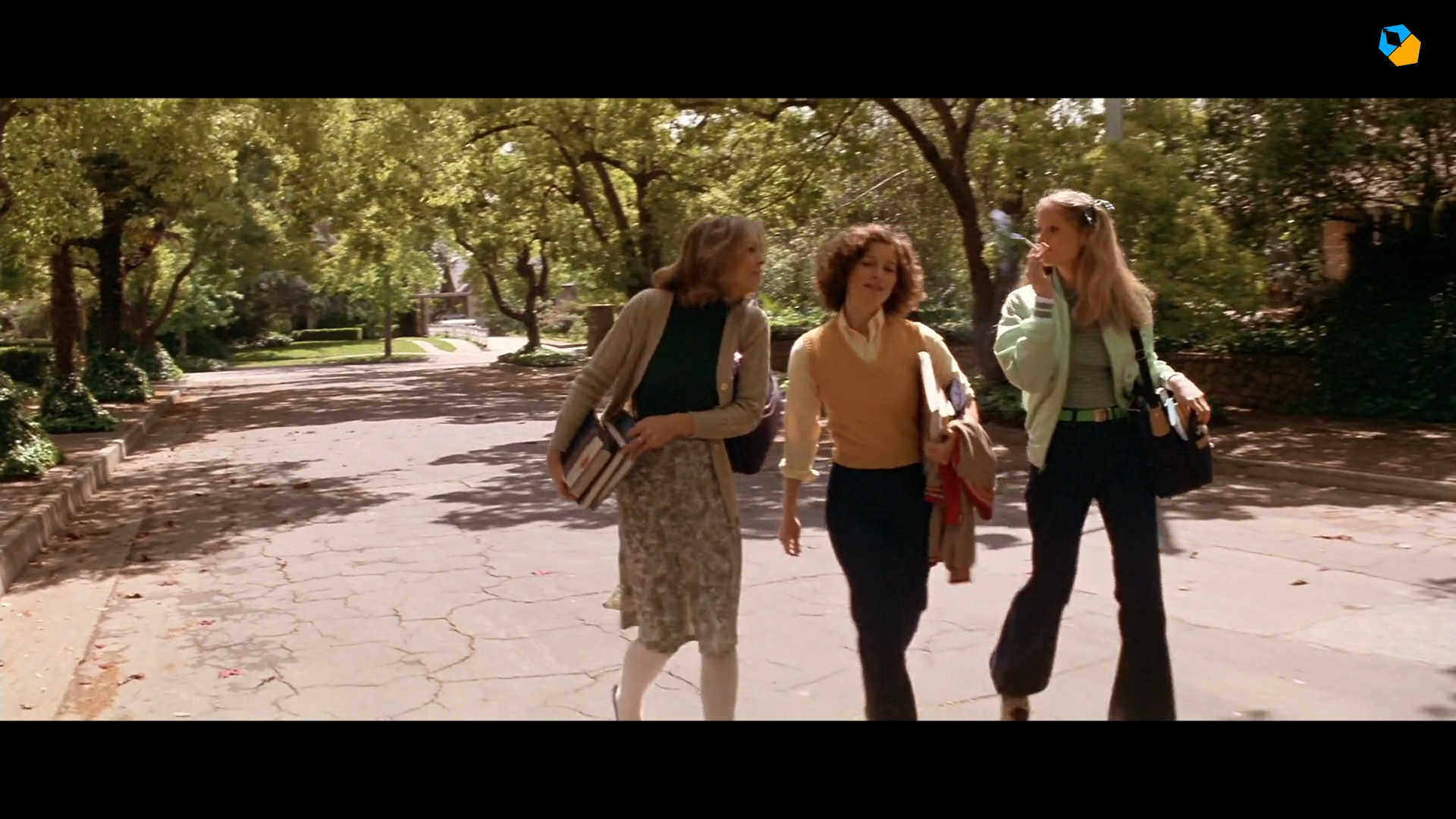
A regular lens would have captured all three girls, but not a lot of the background. In this case you can see the background is empty. Really empty.
John Carpenter carefully builds up this scene from the school all the way to their homes. We follow their mundane conversation, but throughout every frame what we subconsciously take in is the fact that this neighborhood is mostly deserted at this time of day.
You wouldn’t get the same sense of isolation with spherical lenses. Here are the same shots cropped to a more traditional 1.85:1 aspect ratio:
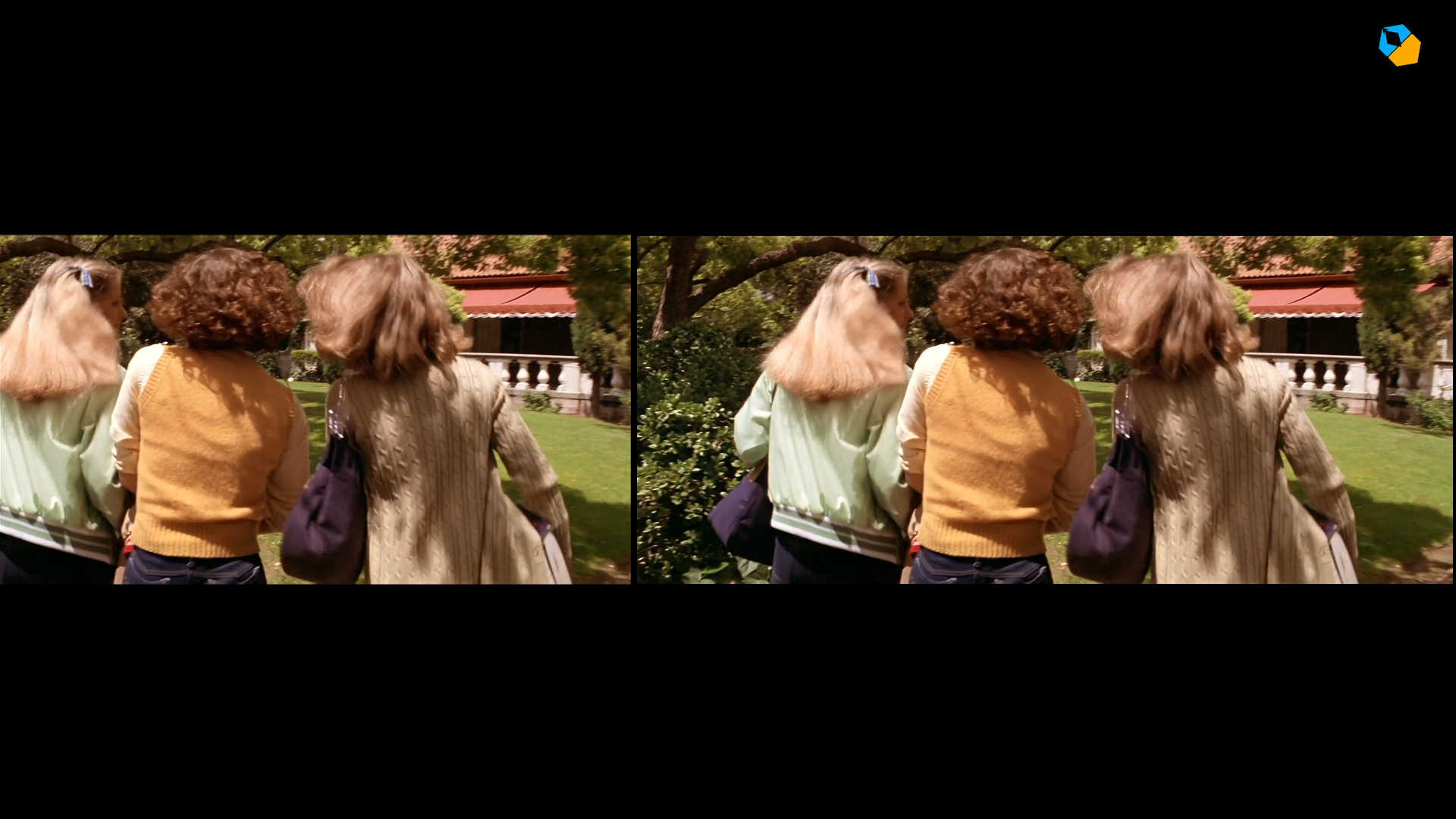
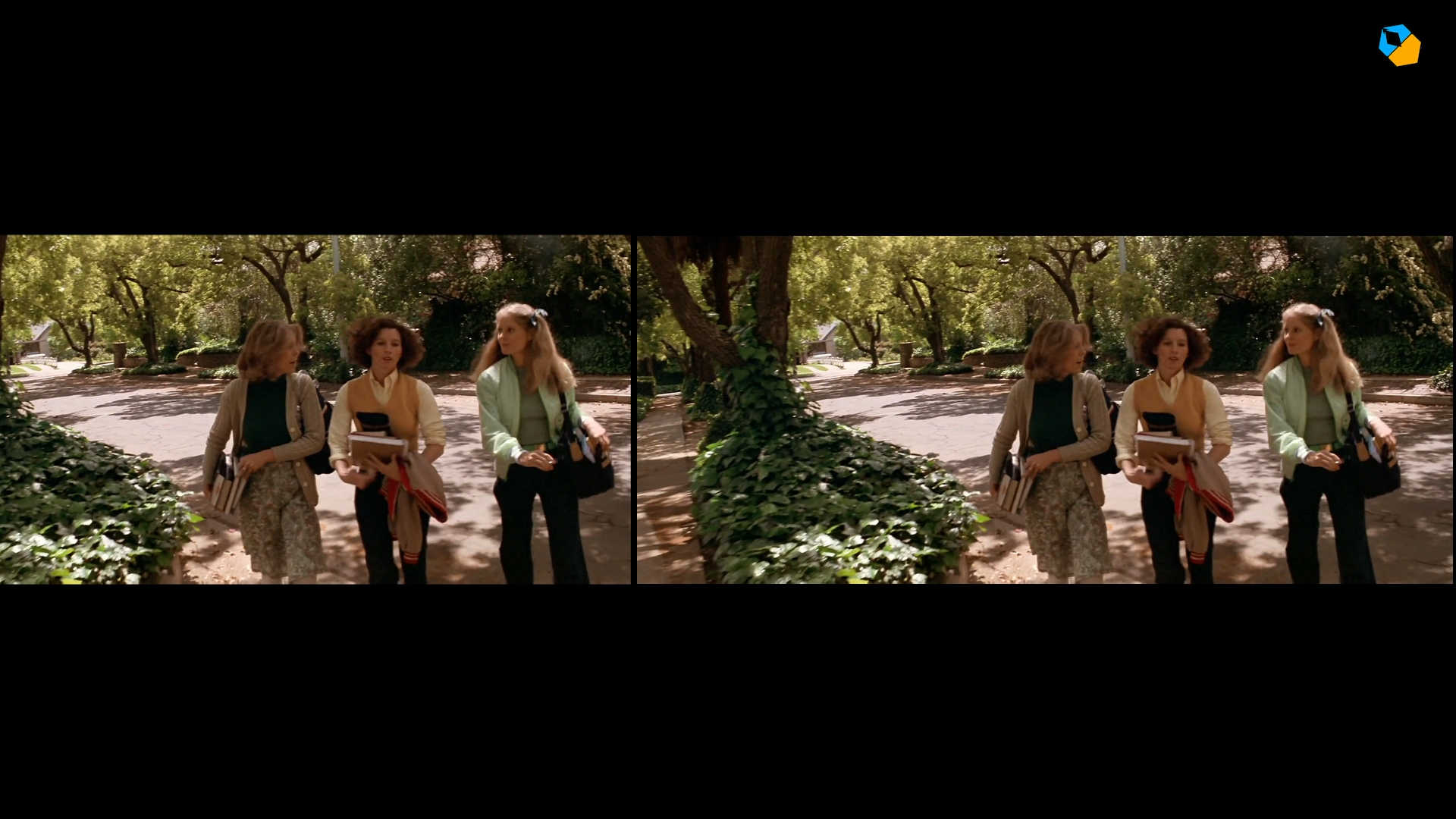
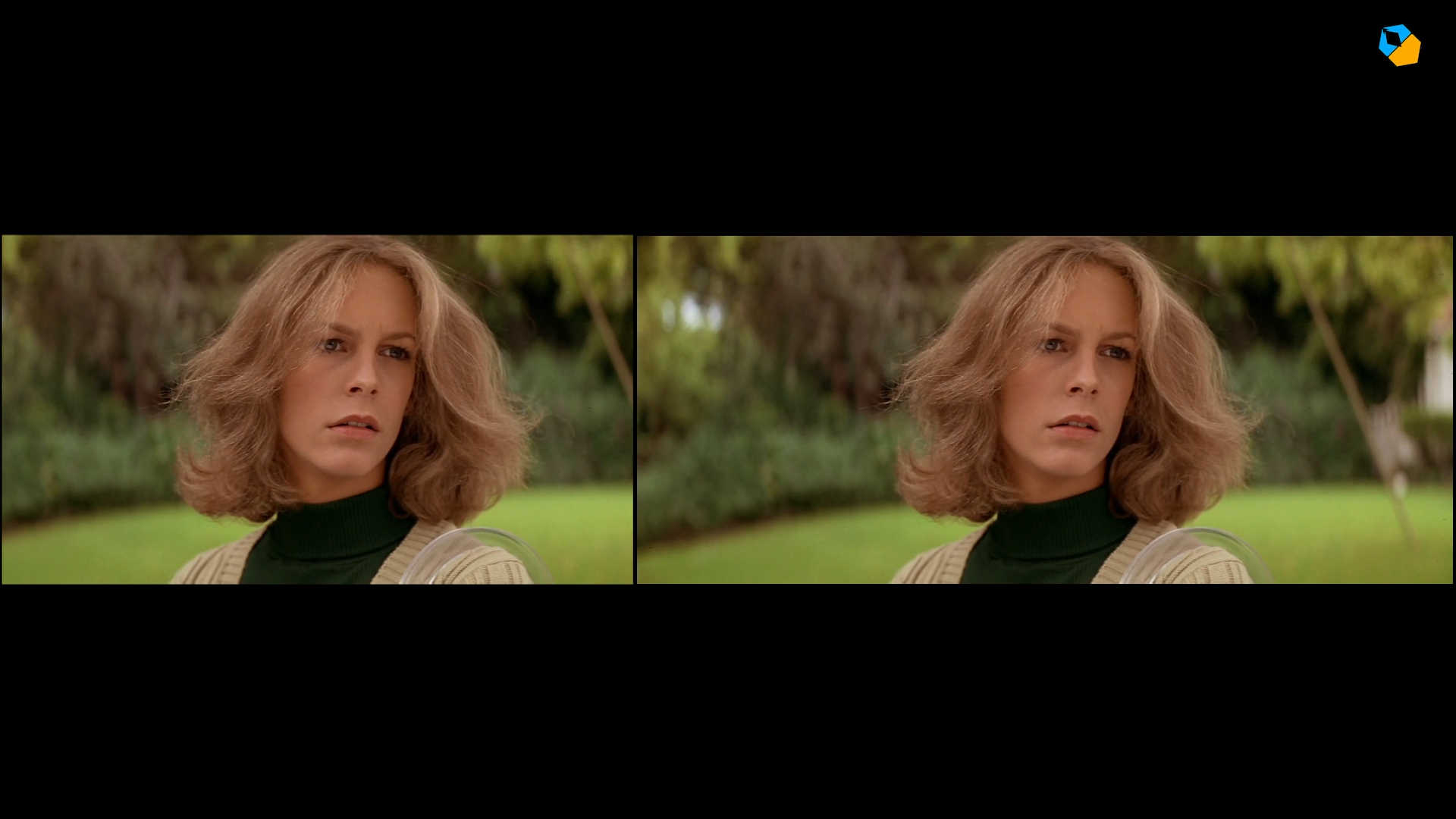
You can tell you don’t really feel quite the same about the neighborhood. It’s not about one or two shots, but the build up of tension in small increments.
By the time the car arrives we are scared. We know for sure the place is deserted. When one of the girls yells out and the car stops, our hearts stop. This guy would dare do this in the middle of the day, in the middle of the street – but only because it’s empty. If John Carpenter hadn’t shown us that, we would be wondering why the girls are so scared.
The same is true later when Annie sees Michael behind the bush. There’s no place to run or hide, and that makes Michael Myers all the more threatening. And that’s also why you get the jump scare at the end of the sequence when Brackett apparently pops out of nowhere, even with such a wide frame.
This false sense of emptiness is used very effectively throughout Halloween, and the sudden jump scares are more jolting because we’ve been led to believe the place is empty. Instead of moving the camera around and showing us how empty a place is, Carpenter was able to achieve the same result with greater economy because you could see more. And he didn’t have to distort faces and make anybody look grotesque.
Framing Car Interiors
Anamorphic lenses have some advantages and disadvantages in framing. One of the great advantages is in car interiors. You can see the whole car and the person without feeling the camera was crammed in there.
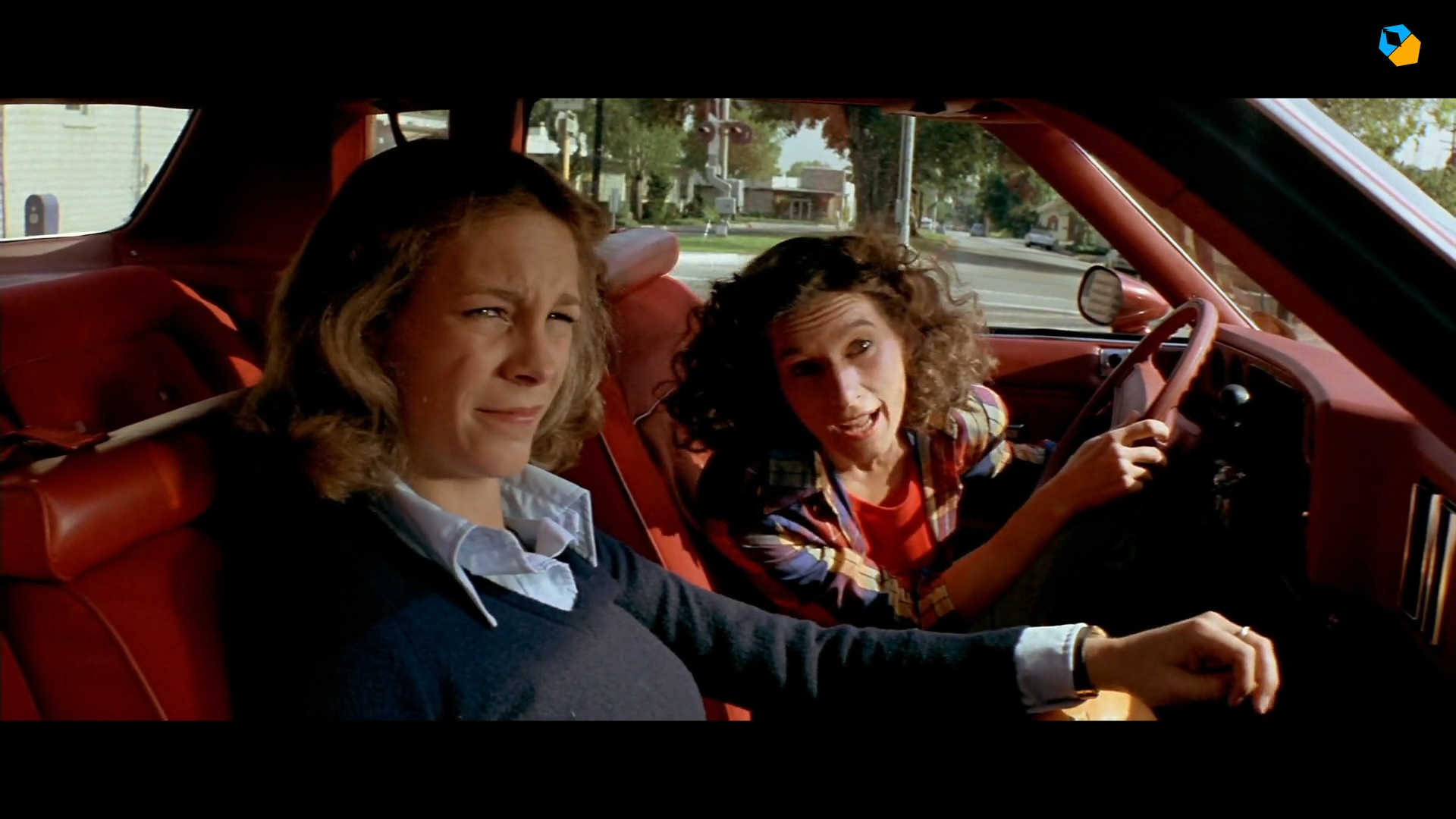
The car feels spacious and roomy, not claustrophobic.
Barrel Distortion
There’s another feature of some anamorphic lenses that are important as well. The biggest is called barrel distortion. Barrel distortion is what you get when perpendicular lines at the edges of the frame bend outwards, like a barrel:
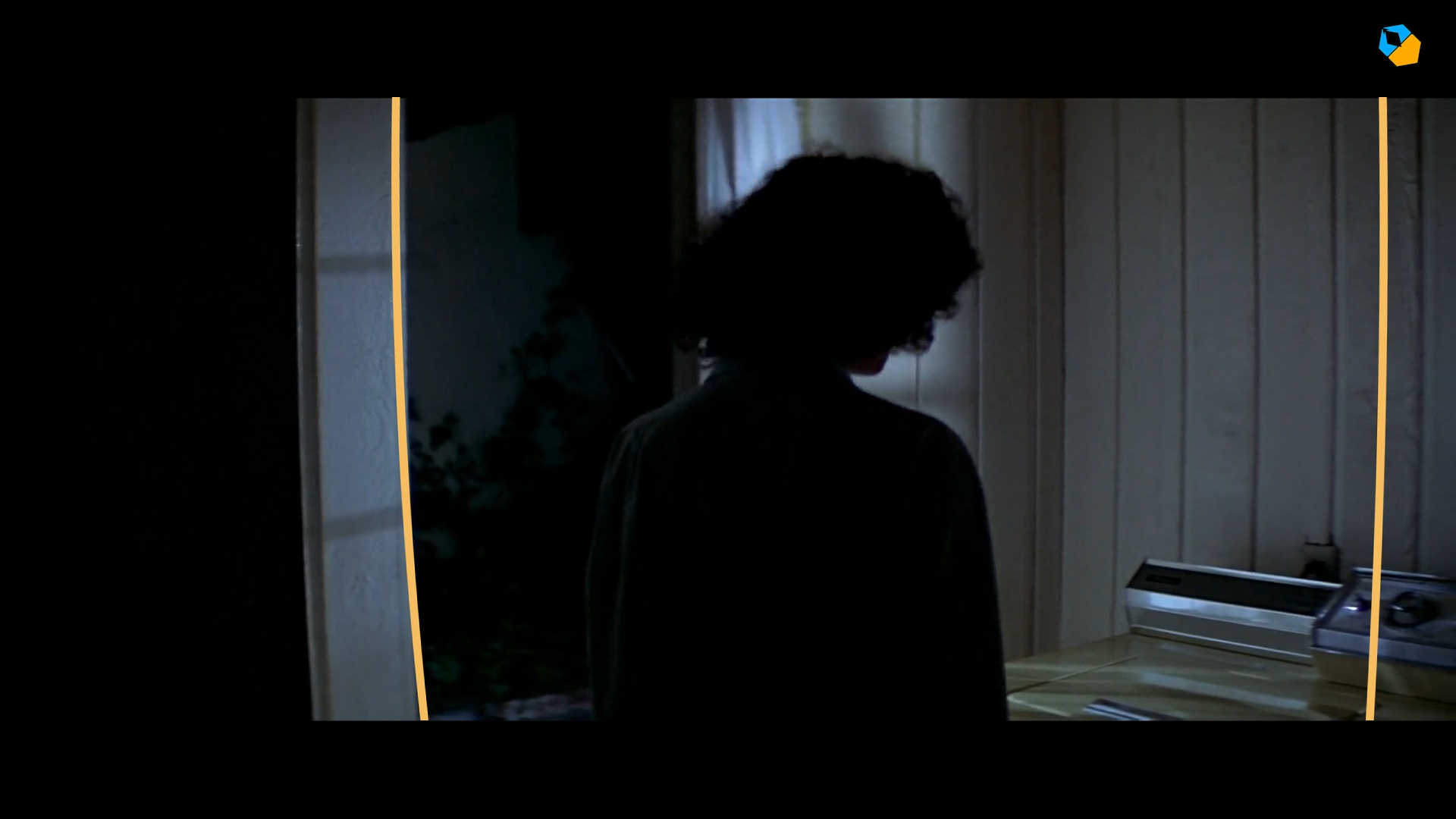
Halloween is chock full of such distortions, and they are not always by accident. You can see how barrel distortion actually accentuates greater space. It rounds out the world even more so you feel there’s greater space between the foreground and the background.
This is extremely useful in some scenes, like this scene towards the end when Laurie runs to a neighbors house and screams for help. The camera is handheld but you can see how the barrel distortion helps to create more space between Laurie and the neighbors. They’re right there, but there’s a world of space between them. It was achieved with lenses – you simply wouldn’t get the same look with spherical lenses.
With a normal lens you would have to get in closer and the character would become much larger in the frame.
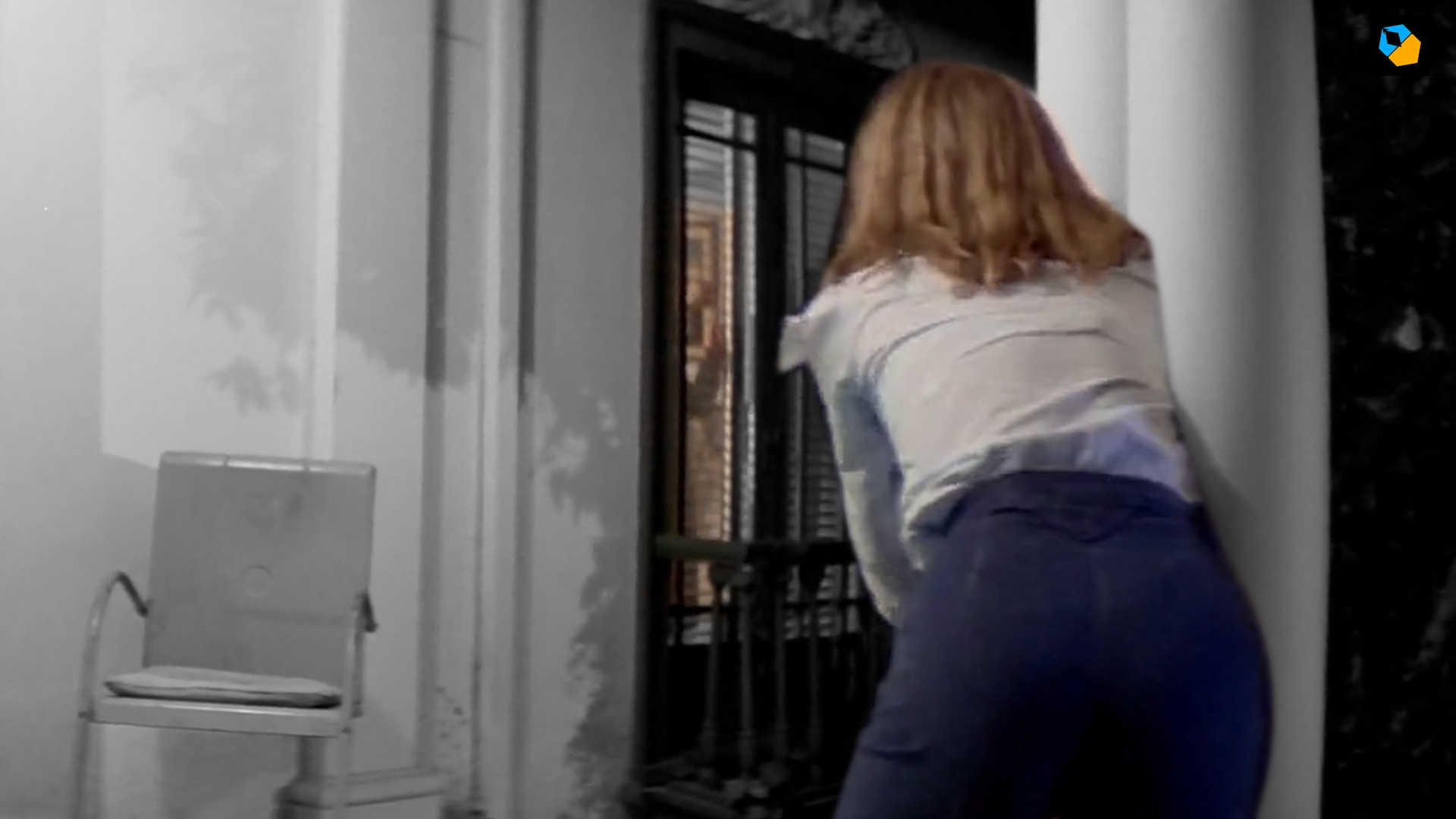
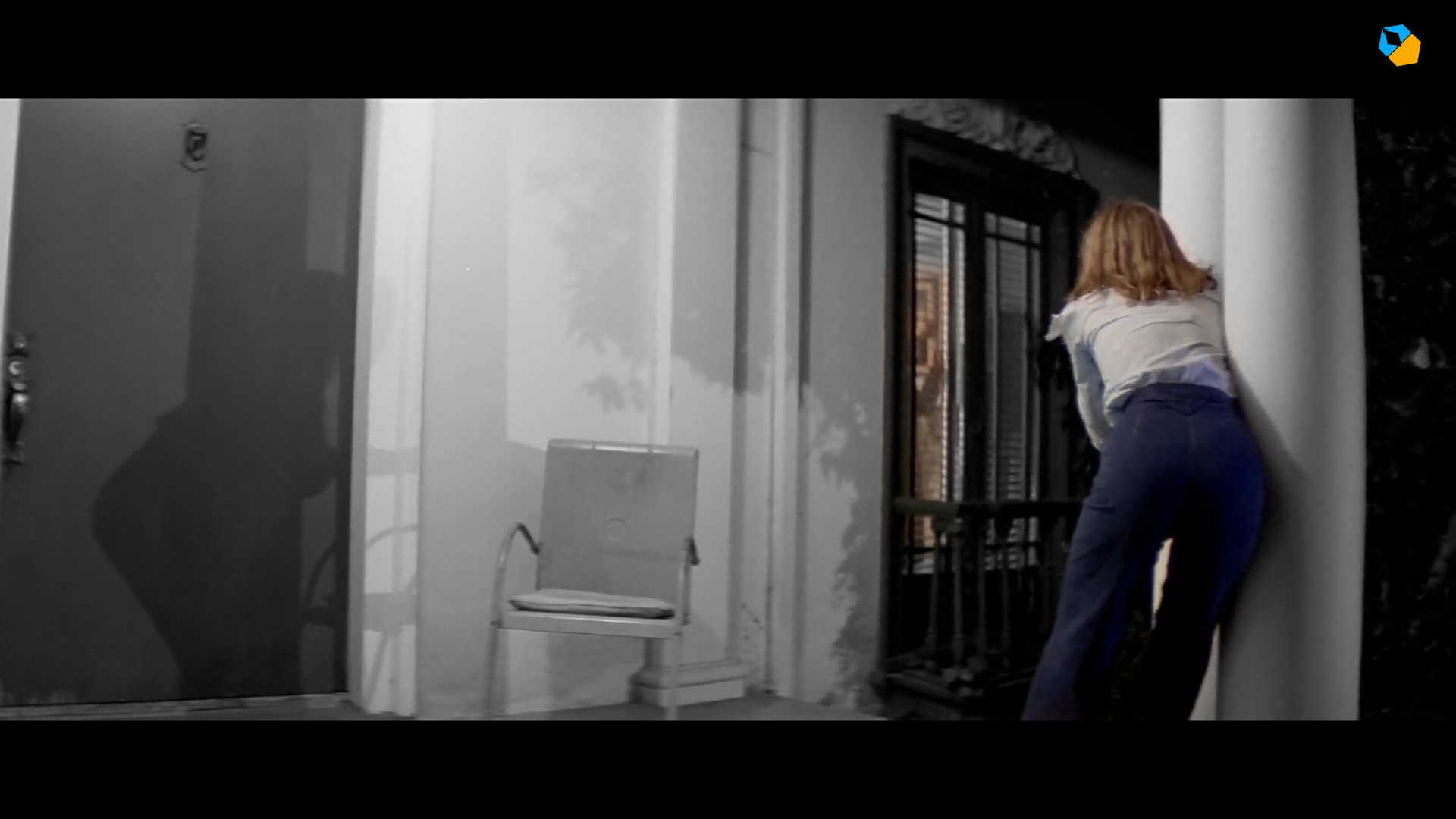
She would block out more in the center if you wanted to see the edges. With anamorphic, the characters show more of the center while you see the edges as well. A small thing, but it adds up greatly.
The whole point of Halloween is how Mike Myers is like the shark in Jaws – a force of nature that will keep on coming. In Halloween you get that sense because the location is wide open, people are all close together, and it still doesn’t make a difference to him. He’s going to hunt, and that’s scary. A villain who comes in plain sight.
Combining Two Shots
The last way anamorphic lenses helped was to get two shots into one. Carpenter could basically merge different transitions without moving the camera much. Like this shot of the wide room where the camera pulls back to reveal the telephone.
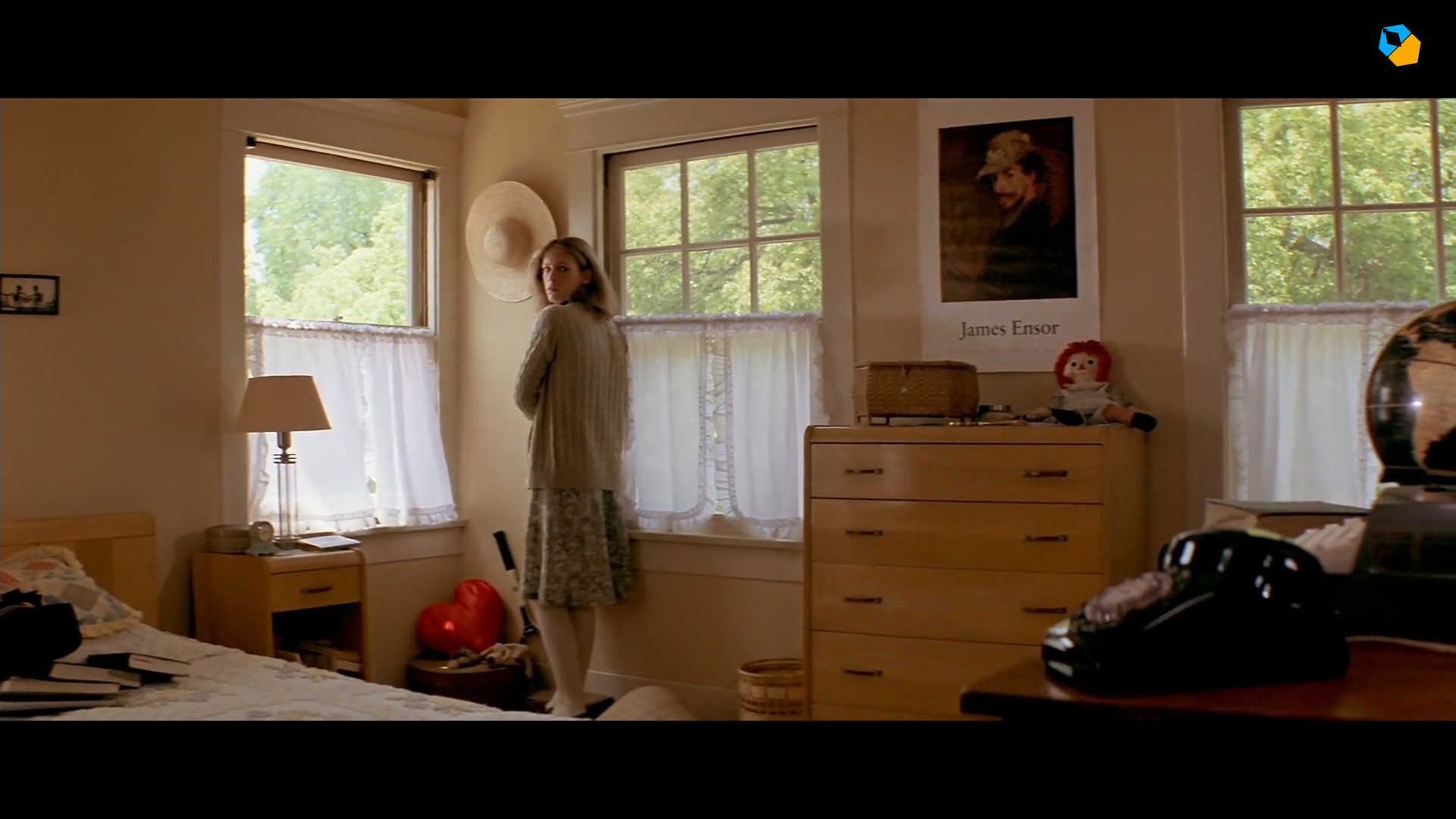
The best use of this can be seen in the climax, in the famous shot of Mike popping out from the darkness. He doesn’t have to come in from behind from under the bed or behind a door. He’s right there on screen, in the same shot.
Even on an ultra low budget film like Halloween, John Carpenter was able to use anamorphic lenses to create the world of Haddonfield in a perspective you would not normally see. It’s the sense of space you get with anamorphic that makes it uniquely different.
If you like anamorphic distortions and blue flares a lot of lenses can give you that, even on small budgets. He didn’t have those back then.
If you just want the field of view without all the anamorphic distortions and aberrations, you can opt for anamorphic lenses like the Arri Master Anamorphics, which are my favorite anamorphics. I hate distortions, but that doesn’t make them useless. It’s like different kinds of paint.
A painter uses whatever to make art. And in Halloween’s case, piss our pants.

2 replies on “How Anamorphic Lenses made Halloween Scary”
Very helpful sir, I never knew this much about anamorphic lenses. Thank you much.
You’re welcome!